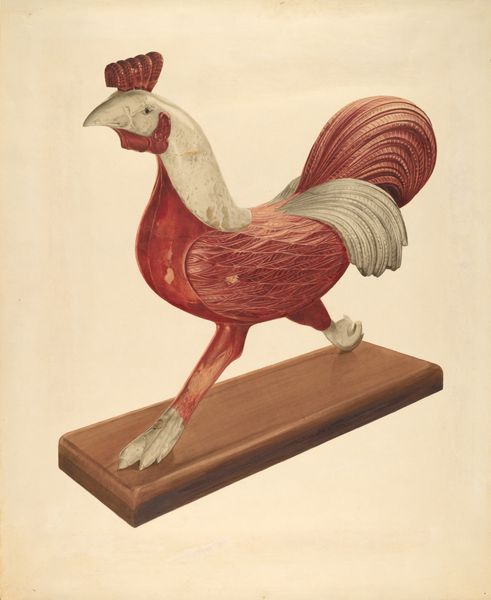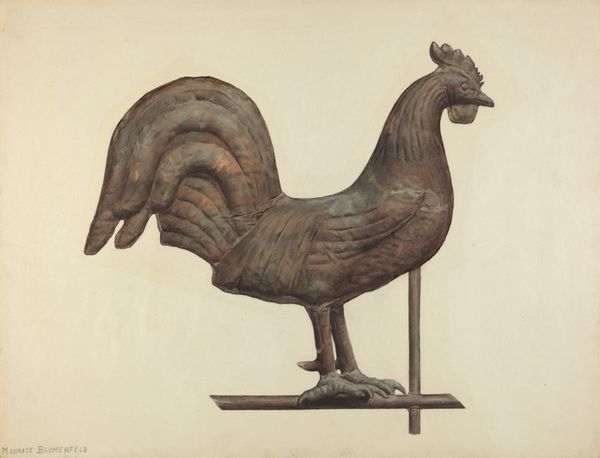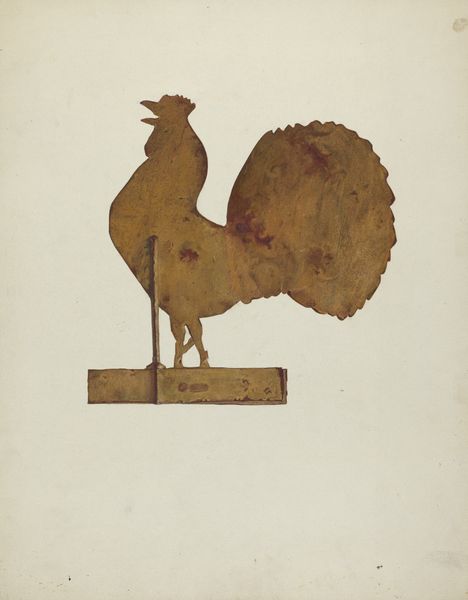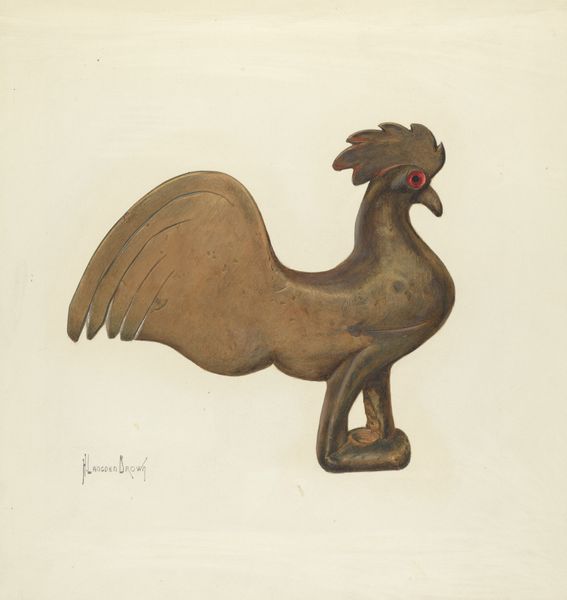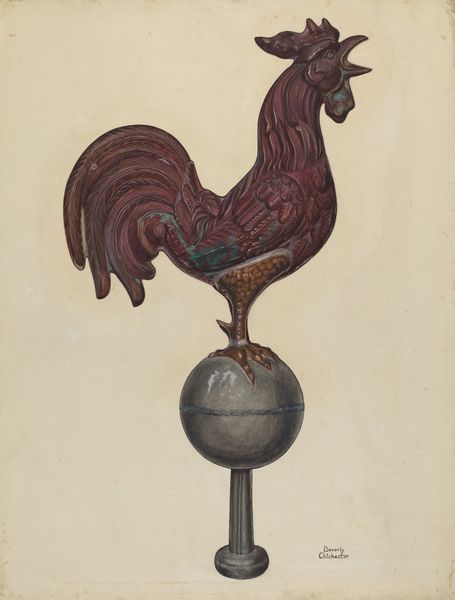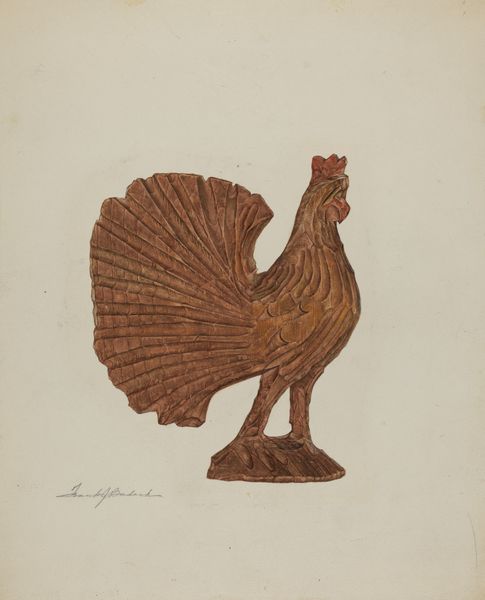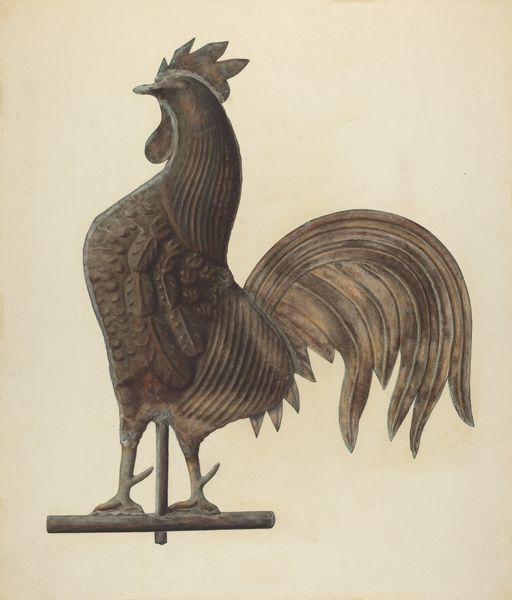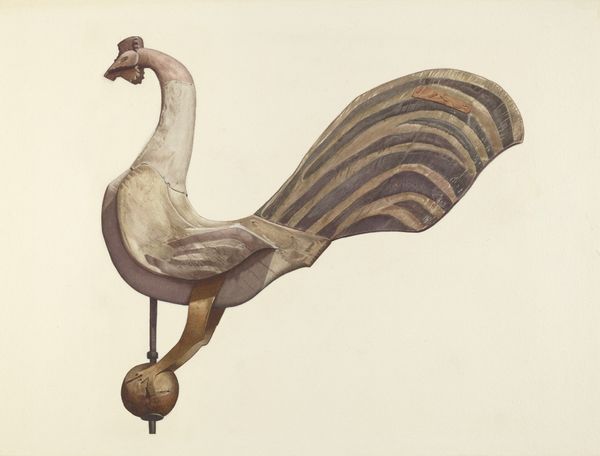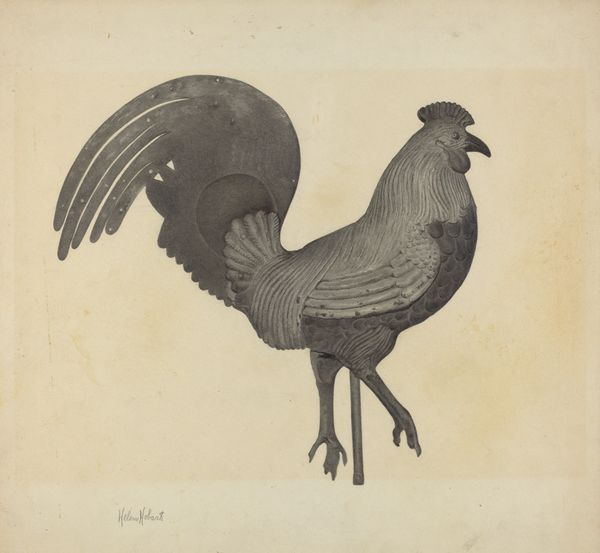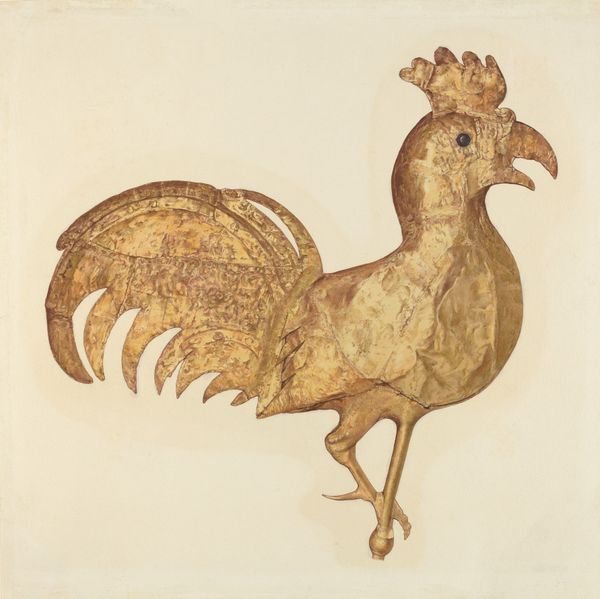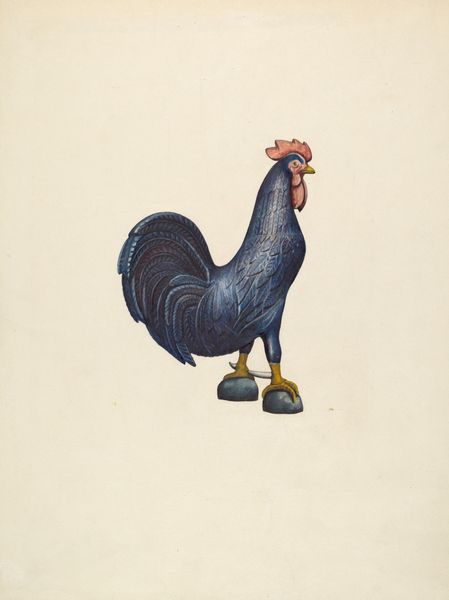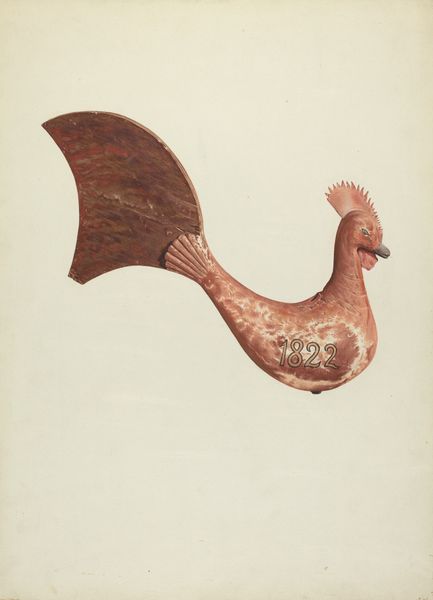
drawing, pencil, wood
#
drawing
#
caricature
#
caricature
#
folk-art
#
pencil
#
wood
Dimensions: overall: 43.5 x 36 cm (17 1/8 x 14 3/16 in.) Original IAD Object: 24" high
Copyright: National Gallery of Art: CC0 1.0
Curator: Before us is John Sullivan's "Weather Vane," a pencil and wood drawing from 1939. It seems so evocative of its time. Editor: It does strike me immediately by the graphic clarity with which Sullivan renders a humble barnyard icon, so essential in understanding material, form and symbolic role of roosters. Curator: It’s more than just formal observation. The image conjures ideas around American folk art traditions and masculinity intertwined with nature. Do you get a sense of rural resilience in the pre-war period? The social symbolism of the rural cock seems to be a relict to explore social-ecological problems? Editor: Undoubtably. The stark rendering minimizes its more complex role by focusing attention on its shape. The limited use of shading emphasizes two-dimensionality—foregrounding the object's abstract design more than its utilitarian function. Semiotically, Sullivan presents a flattened signifier. The focus shifts away from societal underpinnings. Curator: But can we fully separate that rooster, standing proudly on top of the house, from notions of territory and national identity at a fraught political juncture? He becomes an unwitting symbol in a growing nationalism—what we choose to elevate reflects us as much as it reflects weather patterns. Editor: Certainly, but let's observe closely how Sullivan utilizes line, the contrast between planes and surfaces to articulate form. One would not ignore its compositional strategies, rather it should also act to build a bridge to access Sullivan's social awareness of its folk-art cultural-historical meaning to our actual world. Curator: All readings coexist—to elevate Sullivan's aesthetic vision invites contemplation on the complex negotiations between art and broader socio-political landscapes. Art is never divorced from the circumstances of its creation, in which case a political landscape seems ever pertinent. Editor: Agreed. Perhaps then the power of "Weather Vane" exists not in binary oppositions but instead in the interplay of aesthetics with the era that fostered its creation. Curator: The conversation between aesthetics and historical awareness—illuminates potential connections. Editor: Indeed; together, we see the intersections of art and life reflected by how its inherent features, like shapes and textures, relate directly and are tied to history and theory.
Comments
No comments
Be the first to comment and join the conversation on the ultimate creative platform.
